In the ever-competitive compact hatchback segment, the Dacia Sandero and Hyundai i20 are two prominent players that offer an enticing balance of practicality, performance, and affordability. This article delves into a comprehensive comparison of these two models, focusing on their technical specifications, innovations, and overall value propositions for potential buyers.
Dacia Sandero vs Hyundai i20 – Which car suits you better?
Both models have their strengths – but which one suits you more?
Compare performance, efficiency, price and space directly: Dacia Sandero or Hyundai i20?
Design and Dimensions
The Dacia Sandero, with its bold styling and spacious interior, measures 4088 mm in length, 1848 mm in width, and 1499 mm in height, making it a compact yet roomy hatchback. In contrast, the Hyundai i20 is slightly smaller, measuring 4075 mm in length and 1775 mm in width, with a height of 1455 mm. This difference in dimensions gives the Sandero a more substantial road presence, while the i20's dimensions lend it a nimble handling characteristic.
Powertrain Options
Under the hood, both vehicles offer a range of engine options catering to different driving preferences. The Dacia Sandero is available with petrol and LPG engines, producing up to 110 hp. Its power delivery is accompanied by torque figures ranging from 95 to 200 Nm, depending on the configuration. It also provides options for manual and CVT automatic transmissions, allowing for a tailored driving experience.
The Hyundai i20, meanwhile, comes equipped with either a petrol engine or an advanced petrol MHEV (mild hybrid electric vehicle) system, delivering up to 100 hp. The engine choices are coupled with a manual gearbox or a dual-clutch automatic transmission, offering a blend of efficiency and responsiveness. Torque figures range from 113 Nm for the base engine to 200 Nm for the top variant, ensuring capable acceleration across the board.
Performance and Efficiency
When it comes to performance, the Sandero boasts a commendable 0-100 km/h acceleration time as low as 10 seconds. This impressive figure is complemented by a top speed of up to 183 km/h. Similarly, the i20 offers competitive performance with acceleration times ranging from 11.1 to 12.1 seconds. The max speeds for the i20 reach up to 183 km/h as well, indicating that both cars deliver a thrilling drive.
In terms of fuel efficiency, both models demonstrate commendable figures. The Sandero sees consumption figures ranging from 5.2 to 6.5 L/100 km, while the i20's MHEV variant can achieve as low as 5.1 L/100 km. This makes both cars practical for daily commuting and long-distance travel, with the added benefit of lower running costs.
Interior and Technology
Inside, the Dacia Sandero prioritizes space and comfort, featuring a trunk capacity of 328 liters which can easily accommodate the demands of families or daily errands. The cabin is equipped with essential tech, including smartphone connectivity options, but it is known for a more utilitarian approach rather than luxurious embellishments.
On the other hand, the Hyundai i20 shines in its interior layout, offering a more modern design with quality materials and user-friendly technology. With a notably larger trunk capacity of 352 liters, it also provides ample storage. The i20 features advanced tech packages, including a digital instrument cluster and a high-quality infotainment system, enhancing the driving experience and providing a more upscale feel.
Safety Ratings and Features
Both vehicles come equipped with essential safety features. The Dacia Sandero has earned a respectable safety rating and includes features such as electronic stability control and multiple airbags. The Hyundai i20 has advantages thanks to its inclusion of cutting-edge safety technology, such as advanced driver-assistance systems, to enhance safety on the road.
Conclusion
Choosing between the Dacia Sandero and the Hyundai i20 boils down to personal preferences and requirements. The Sandero offers a more rugged, practical option with superior power potential in certain variants, while the i20 excels with its modern technology features and refined interior design. Each model stands out in its unique way, making them worthy contenders in the hatchback segment.
Here’s where it gets real: The technical differences in detail
Costs and Efficiency:
Price and efficiency are key factors when choosing a car – and this is often where the real differences emerge.
Dacia Sandero has a decisively advantage in terms of price – it starts at 10700 £, while the Hyundai i20 costs 17400 £. That’s a price difference of around 6695 £.
Fuel consumption also shows a difference: Hyundai i20 manages with 5.20 L and is therefore minimal more efficient than the Dacia Sandero with 5.30 L. The difference is about 0.10 L per 100 km.
Engine and Performance:
Under the bonnet, it becomes clear which model is tuned for sportiness and which one takes the lead when you hit the accelerator.
When it comes to engine power, the Dacia Sandero has a minimal edge – offering 110 HP compared to 100 HP. That’s roughly 10 HP more horsepower.
In acceleration from 0 to 100 km/h, the Dacia Sandero is to a small extent quicker – completing the sprint in 10 s, while the Hyundai i20 takes 11.10 s. That’s about 1.10 s faster.
There’s no difference in top speed – both reach 183 km/h.
Both models offer the same torque – 200 Nm.
Space and Everyday Use:
Cabin size, boot volume and payload all play a role in everyday practicality. Here, comfort and flexibility make the difference.
Both vehicles offer seating for 5 people.
In curb weight, Hyundai i20 is minimal lighter – 1088 kg compared to 1089 kg. The difference is around 1 kg.
In terms of boot space, the Hyundai i20 offers minimal more room – 352 L compared to 328 L. That’s a difference of about 24 L.
In maximum load capacity, the Hyundai i20 performs slight better – up to 1165 L, which is about 57 L more than the Dacia Sandero.
When it comes to payload, Hyundai i20 minimal takes the win – 472 kg compared to 436 kg. That’s a difference of about 36 kg.
Who comes out on top?
Overall, the Dacia Sandero shows itself to be wins the duel decisively and secures the title of DriveDuel Champion.
It convinces with the more balanced overall package and proves to be the more versatile choice for everyday use.
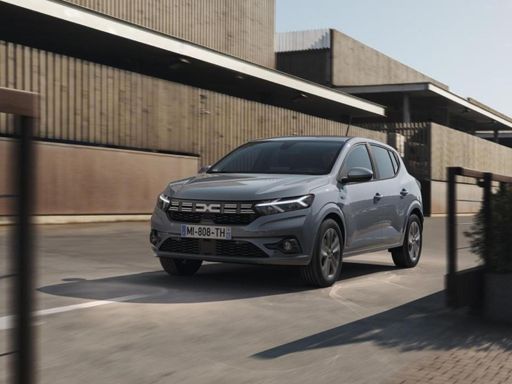 @ Dacia / Renault Group Media
@ Dacia / Renault Group Media
Dacia Sandero
Dacia Sandero
The Dacia Sandero is the everyman's hatchback — unpretentious, practical and brilliantly affordable, with sensible space and straightforward charm where it matters most. It won't wow in the premium lane, but for buyers who want honest, dependable transport without showroom theatrics, the Sandero is a clever, no‑nonsense pick that keeps running costs low and grin levels high.
details @ Dacia / Renault Group Media
@ Dacia / Renault Group Media
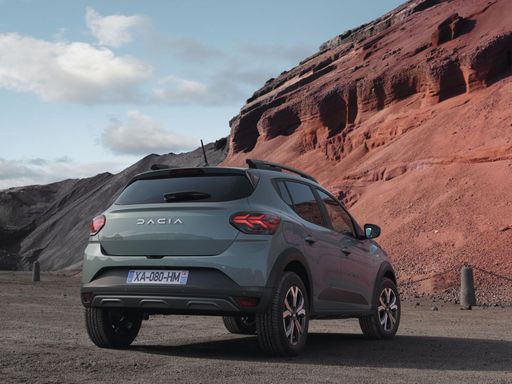 @ Dacia / Renault Group Media
@ Dacia / Renault Group Media
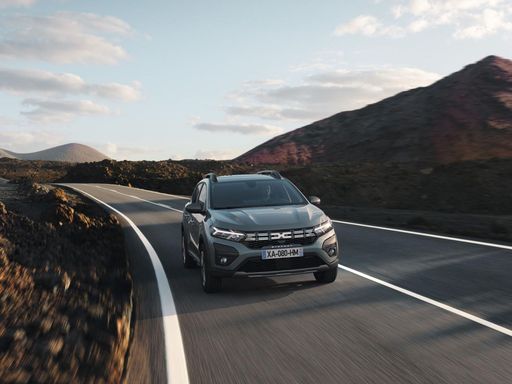 @ Dacia / Renault Group Media
@ Dacia / Renault Group Media
Hyundai i20
The Hyundai i20 is a cheeky small car that mixes smart styling with sensible practicality, feeling more polished and roomy than you might expect for the money. It’s an easy car to live with, offering engaging handling, a comfy cabin and useful equipment that make daily commutes and weekend errands notably less dull.
details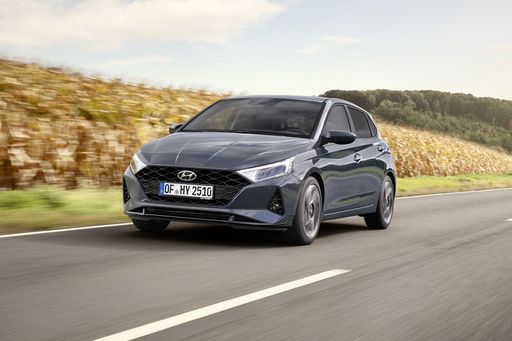 @ Hyundai Motor Company
@ Hyundai Motor Company
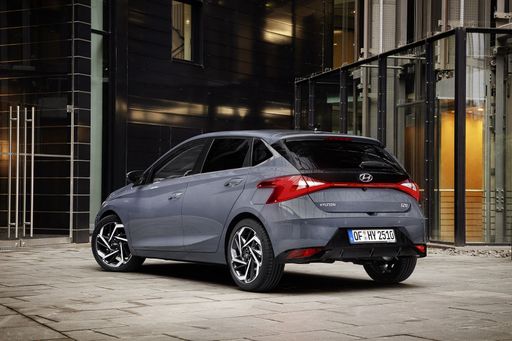 @ Hyundai Motor Company
@ Hyundai Motor Company
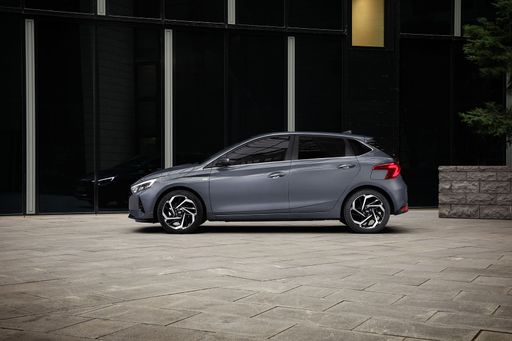 @ Hyundai Motor Company
@ Hyundai Motor Company
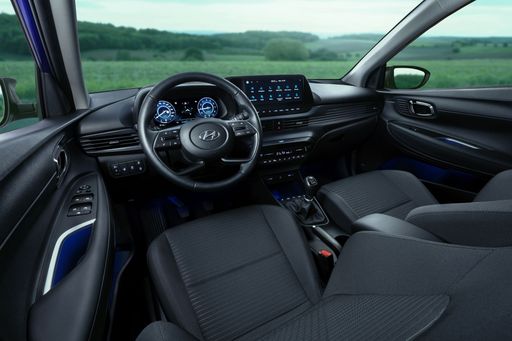 @ Hyundai Motor Company
@ Hyundai Motor Company
 @ Hyundai Motor Company
@ Hyundai Motor Company
 @ Dacia / Renault Group Media
@ Dacia / Renault Group Media
|
 @ Hyundai Motor Company
@ Hyundai Motor Company
|
|
|
|
Costs and Consumption |
|
|---|---|
|
Price
10700 - 16700 £
|
Price
17400 - 24000 £
|
|
Consumption L/100km
5.3 - 7.1 L
|
Consumption L/100km
5.2 - 5.3 L
|
|
Consumption kWh/100km
-
|
Consumption kWh/100km
-
|
|
Electric Range
-
|
Electric Range
-
|
|
Battery Capacity
-
|
Battery Capacity
-
|
|
co2
105 - 140 g/km
|
co2
119 - 121 g/km
|
|
Fuel tank capacity
32 - 50 L
|
Fuel tank capacity
40 L
|
Dimensions and Body |
|
|---|---|
|
Body Type
Hatchback
|
Body Type
Hatchback
|
|
Seats
5
|
Seats
5
|
|
Doors
5
|
Doors
5
|
|
Curb weight
1089 - 1209 kg
|
Curb weight
1088 - 1190 kg
|
|
Trunk capacity
328 L
|
Trunk capacity
352 L
|
|
Length
4088 - 4099 mm
|
Length
4065 - 4075 mm
|
|
Width
1848 mm
|
Width
1775 mm
|
|
Height
1499 - 1535 mm
|
Height
1450 - 1455 mm
|
|
Max trunk capacity
1108 L
|
Max trunk capacity
1165 L
|
|
Payload
404 - 436 kg
|
Payload
450 - 472 kg
|
Engine and Performance |
|
|---|---|
|
Engine Type
Petrol, LPG
|
Engine Type
Petrol
|
|
Transmission
Manuel, Automatic
|
Transmission
Automatic, Manuel
|
|
Transmission Detail
Manual Gearbox, CVT
|
Transmission Detail
Dual-Clutch Automatic, Manual Gearbox
|
|
Drive Type
Front-Wheel Drive
|
Drive Type
Front-Wheel Drive
|
|
Power HP
67 - 110 HP
|
Power HP
79 - 100 HP
|
|
Acceleration 0-100km/h
10 - 16.7 s
|
Acceleration 0-100km/h
11.1 - 13.7 s
|
|
Max Speed
158 - 183 km/h
|
Max Speed
166 - 183 km/h
|
|
Torque
95 - 200 Nm
|
Torque
113 - 200 Nm
|
|
Number of Cylinders
3
|
Number of Cylinders
3 - 4
|
|
Power kW
49 - 81 kW
|
Power kW
58 - 74 kW
|
|
Engine capacity
999 cm3
|
Engine capacity
998 - 1197 cm3
|
General |
|
|---|---|
|
Model Year
2024 - 2025
|
Model Year
2024
|
|
CO2 Efficiency Class
D, C, E
|
CO2 Efficiency Class
D
|
|
Brand
Dacia
|
Brand
Hyundai
|
What drive types are available for the Dacia Sandero?
The Dacia Sandero is available as Front-Wheel Drive.
The prices and data displayed are estimates based on German list prices and may vary by country. This information is not legally binding.
